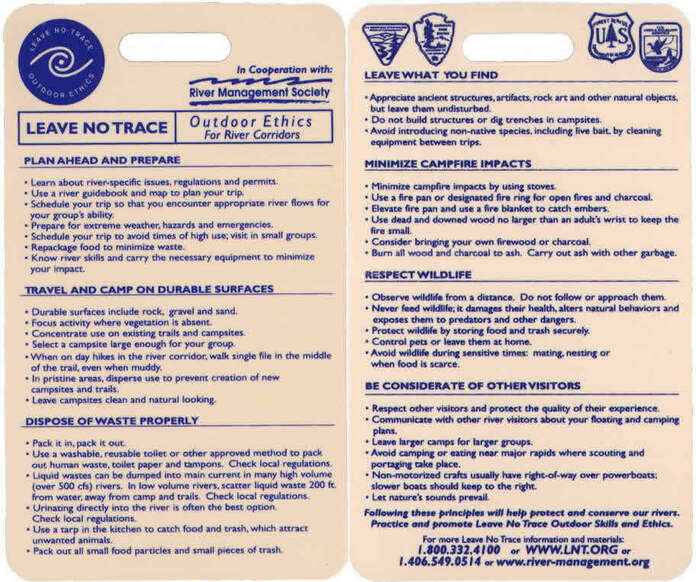
Community Based Tourism
By Karen Schumacher
In usual technocratic fashion, definitions of tourism are broken down into microscopic details of data. One shouldn’t be allowed to just go someplace and enjoy themselves. Ecotourism is “responsible travel to natural areas that conserves the environment, sustains the well-being of the local people, and involves interpretation and education” of tourists. This is seen as different from other screwball tourism categories they have created such as responsible, sustainable, or even green tourism. All of these over analyzed definitions of people going somewhere to freely enjoy themselves will just be listed here as Sustainable Tourism (ST). ST has some set criteria that includes consideration for environmental, socio-economic, and cultural impacts, and sustainable management of the tourist destination, all of which are essentially the same as other definitions. These criteria determine how you are allowed to use land, where, and the way in which you should behave.
Yellowstone to Yukon (Y2Y) is part of this agenda and have been very secretive about this longer term plan for CBT, usually referring to it vaguely as a form of economic development or diversity. While working hard to place as much land as possible into protection between existing protected areas (PA) for their connectivity agenda, the end goal includes dictating how that land should be designed and used as a tourist. While this Y2Y link to a conference does not work, it does state the conference includes presentations on “ecosystem economics and tourism”, and is appropriately named “Tracking the Human Footprint”. This is CBT and there are now degrees that can be earned in this field.
As usual with technocrats, everything has to be broken down into precise categories for scientific measure. For PA tourism, CBT includes the ST concept but in true technocratic fashion, the criteria are even more precisely defined. Increasing the amount of PAs is essential for CBT implementation, and is a driving factor behind the urgency by Y2Y and their partner non-governmental organizations (NGO) to get as much land as possible into protection. Because the list of technocratic CBT requirements is so exhaustive, the International Union for Conservation of Nature (IUCN) provides the best guide for now. This particular document is also important because Y2Y is an IUCN member, just type their full name in the search box, and Y2Y founder, Harvey Locke, is also a member, working hard to implement IUCN objectives. The IUCN is an active partner of the United Nations (UN). It is a falsehood for any Y2Y member to say there is no connection to the UN as Jody Hilty, Y2Y President and Chief Scientist, stated while insulting Idaho rural residents at the 31:20 mark in this video. While claiming the population has doubled, Ms. Hilty doesn’t believe anyone has the right to freedoms as she condescendingly mocks those who do at the 26:10 mark, and that OHV use should be removed at the 9:00 mark. Doubled in what time frame Ms. Hilty, and is it not rather pompous to presume that this alleged double population will descend on what you believe is land that should never be used? Folks, this is the technocratic arrogance we are dealing with. Ms. Hilty herself references the IUCN PA agenda in the video.
In a 2014 study, Ms. Hilty even scrutinized local land use ordinances for “conservation design” in protected areas, advocating for development that “requires a portion of a residential property to be set aside for conservation” with “smaller lots…clustered together, allowing for open space and biological resources to be permanently protected”, having full intentions of targeting local governments for inclusion of these objectives into land use policies. There are Y2Y and other NGO members who carry out these tasks, targeting local governments.
In the IUCN Tourism and visitor management in protected areas Guidelines for sustainability document, all aspects of controlling tourism in PAs is covered. IUCN and others believe tourism has a negative impact on the environment and especially on PAs such as parks and wilderness areas. As more areas are placed into protective status, there will be more regulated use, at least that is the plan. Regulated use considers conservation of the area, economical and social factors, and cultural aspects with guidelines broken down into miniscule details. While this document may seem overwhelming and of not much interest, it should be at least scanned through to understand, and prepare for, the future of what Y2Y and others want to do. Being aware of this regulatory control agenda will assist Idahoans in recognizing it when attempts are made to integrate the objectives into local land use policies.
There are some basic elements to Protected Area Tourism. Some of those elements include programs that educate the the tourist on conservation practices and the importance of PA conservation. Guided tours, campfire talks, and friendly reminders located around the area are just a few traps for education. The intent is influencing both tourist businesses and visitor behavior. These ideologues believe CBT is an economic benefit with increased number of jobs while charging fees for visiting a PA. Also within this fatuous idea is the belief that living standards will increase, cultures will be appreciated more, and mental health will improve, but not without the dichotomy of concerns over “psychological” stress to wildlife and environmental damage from tourism.
As a result, there must be management objectives because of these impacts. Tourism must align with conservation objectives which leads to strict control over land use and the way in which one behaves and visits the area. There should also be a “commercialisation (sic) manual”, dictating how businesses are managed, some of which includes adopting “an ecosystem-based approach in tourism development” and designing and adopting “nature-based solutions”. For businesses that currently exist, the plan includes educating them on the proper way to conduct their business.
With their “Visitor Management Framework”, recommendations include putting “hard limits (up to and including bans) on problematic visitor uses” through zoning, rationing, and enforcement. Other management methods involve increasing surveillance, limiting activity to bike only zones or hiker only days, prohibiting motor use, limiting campsite designation, length of stays, access points, and size of groups; restrictions on campfires, fishing, and hunting; requiring visitors to hire guides; and imposing fines. In the never ending endeavor for control, requiring tourist proof of ecological knowledge and recreational activity skills is even listed. The World Commission on Protected Areas (WCPA) prepared a report for IUCN which has a special tools section for visitor management which IUCN advocates. The U.S. Forest Service and other federal agencies have already adopted these visitor management tools, true technocratic dictatorship.
Certification as a tourist and especially as a business is seen as needed for “conformity to a set of standards, including specific sustainability targets”, which they see as a possible “marketing tool” to attract tourists, a way in which to influence behavior, duping people to believe that all of this control over what we do and how we behave is good.
An ominous subject is “buffer zones”. These are communities just outside of protected areas, often referred to as failures, in spite of the fact that communities which lie near PAs have been successfully managed by locals and families for generations. Another term for these buffer zones is gateway communities. Because of the erroneous belief that these communities don’t know what they are doing, a summit was held in 2018 to discuss strategies on how to change the way in which these communities currently function with local control. This insulting 1999 article also expresses the idea that gateway communities don’t know what they are doing and should look like Jackson. Currently, the Federal Highway Administration also has their hands in redesigning gateway communities for economic benefits and “livability“, defining a gateway community as a “community directly adjacent to or near public lands managed by a federal agency which actively provides services to the public land visitors.” A case is also made for expanding parks to manage the deluge of tourists, just sucking those gateway communities right into the fold of dictatorship. For every Idaho tourist community near public or protected land, you are a target for this agenda, starting with communitiesnear Yellowstone.
The United Nations Environmental Program (UNEP) also has their fingers in the bowl for PA tourism, publishing this Ecotourism: Principles, Practices & Policies for Sustainability document in 2002. Y2Y is identified as an active “regional” participant in this 2012 document, Sustainable Mountain Development Green Economy and Institutions, which describes the true intention behind Y2Y activities, a “framework” for mountain development. With Agenda 21 as a key reference for future action for Governance, the focus is conservation and development, “green investment”, policy partnerships with the private sector (P3), and green energy use. What this gibberish really means is the technocrats believe we are unable to control our growth with proper planning, harm the land and environment, and indeed we ourselves need to be micromanaged. This is one massive agenda for control, or more appropriately worded, dictatorship, and our government is right in line to implement it in their partnerships with the UN and NGOs such as Y2Y. The UN World Tourism Organization (UNWTO) is spreading this same agenda around the world, promoting “observation” of nature, specialized tour operators, managing areas for conservation, and promotion of education on conservation.
Both Agenda 21 (pg 33) and 2030 have specific sections on tourism. This objective has been planned for many years and as more land is placed into forms of protection, they are to the point where more dictatorial methods will incrementally be placed on us. The UN recently updated their sustainable mountain development objectives.
To guard your local land use policies from this assault, contact your local elected officials about creating a citizen advisory committee (CAC), there are multiple types of CACs, one of which could be specific to land use policies. The mission can be simple, to have citizen involvement over decisions made for land policies and prevent the inclusion of the ST agenda. It also ensures citizens would have prominent input into those policies as the CAC could hold public meetings, rather than NGOs controlling the discussion. This would also be a tremendous service to your commissioners and council members as understanding state land use laws can be complex. Recommendations can be made to the officials, this being especially critical for “gateway” communities. If you want to get involved in protecting your community from the larger Y2Y and UN agenda, give this some serious thought. Create a Resource Management Plan similar to this Custer County prooposal that ensures adherence to federal laws and maintains local control. Now is the time for you to leave behind the “I don’t know what to do” slogan. Be the sheepdog before a sustainable tourismcorporate developer comes knocking at your door to design the whole area as a master plan, or through the federalgovernment.
Otherwise, you will be outweighed by this agenda, and the graphic below indicates your position in the decisions.
